Secure your team’s safety when working at heights by ensuring they are fitted with the best fit-for-purpose harness for the job. The guide below will walk you through some options to consider when purchasing a safety harness and how to correctly fit one for maximum safety.
What is a Safety Harness?
A safety harness is a component of a fall protection system that is designed to protect a worker from injury or death when working at heights. The core product of a fall arrest system, the harness is usually fabricated from the rope, braided wire cable, or synthetic webbing.
Safety Harness FeaturesWebbingWebbing refers to the harness straps, usually made out of strong polyester. This polyester webbing can be UV stabilised for strength retention even after outdoor use. Webbing can also have other special features making it more suitable for certain applications. D-RingHeight safety harnesses have fall arrest D-rings used to connect the harness to an appropriate lanyard or self-retracting lifeline (SRL). D-rings are most commonly found on the rear of the harness, however, some models include front and side attachment points for confined space or rescue situations. BucklesMost buckles are made of aluminium, which is strong and lightweight. Buckles can also be made out of plastic and stainless steel. Stainless steel buckles and hardware are suitable for underground environments providing better longevity. Most harnesses use a three-bar buckle for easy tightening and loosening. |
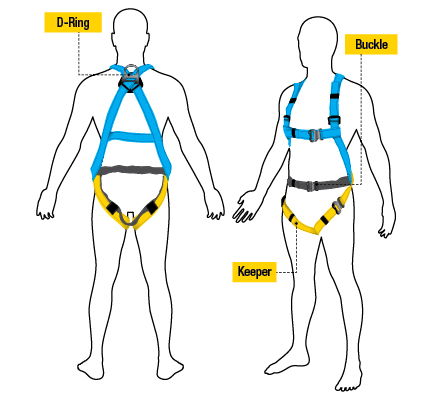
|
KeeperBuckle systems should also come with keepers to easily tuck away excess webbing and reduce the potential risk of getting caught on a structure. Suspension Trauma StrapIn the event of a fall, suspension trauma straps help to alleviate the risk of suspension trauma. Suspension trauma is caused by the pooling of blood due to the restriction of major arteries in the legs. Suspension trauma straps are manually deployed in the event of a fall, allowing the worker who is suspended to effectively stand on their harness to alleviate pressure around the legs and assist with blood flow. Some premium harnesses include suspension trauma straps, however, if your harness does not include straps, they can be purchased separately and attached. |
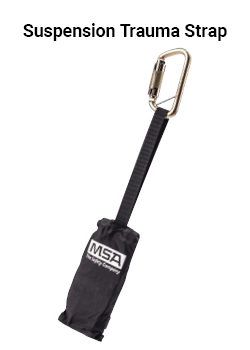 |
 |
H-Style vs X-Style - What's the Difference?There are a few important differences between an H-Style and an X-Style safety harness. The H-Style harness has two over-the-shoulder straps, held together with a strap across the torso forming an H shape. This harness is considered to be the most suited for general purposes. The X-Style harness forms an X across the torso. This style is particularly good for women as it doesn't put pressure on the chest area. |
Harness Sizing ChartHarnesses must be properly fitted to provide adequate fall protection. An ill-fitting harness will not provide the same standard of protection as a properly fitted harness. This size chart is designed to be utilised as a guide. You should always check and follow the manufacturer's size guidelines to ensure a correct fit. |
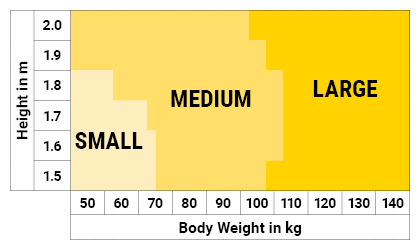 |
How to Correctly Fit a Safety Harness
In fall protection there is no room for just ‘okay’. With multiple sizes, webbing, and various safety components, it can be hard to determine your perfect fit. Follow our ATOM Safety tips below to ensure you get the best fit possible.
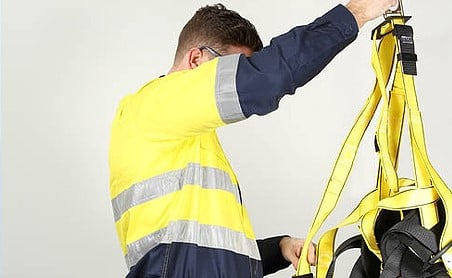
Step 1Pick up your harness by the D-ring (shackle), that when worn will sit in the middle back. When this is done the leg, chest and shoulder straps should all fall into place. Give it a little shake to make sure everything is sitting where it should. |

Step 2Before putting on your harness ensure all components are facing the right way and straps are not twisted. Once sitting correctly, inspect components to ensure none have malformed, have sharp ridges or cracks, and no straps are torn or damaged. |
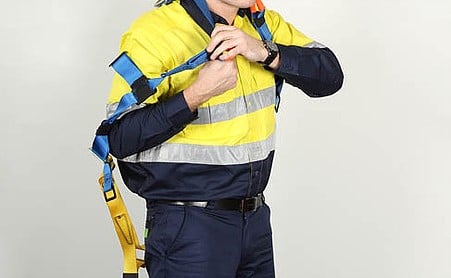
Step 3Place the harness over your shoulders so the D-ring is in the middle of your back between the shoulder blades. If it's not, adjust it by sliding the plaque along with the straps. At no point should the D-ring be off to one side, too high or too low. |

Step 4Pull the leg straps around the thigh and buckle them to achieve a snug fit. You should be able to fit two fingers between the strap and your leg making the harness secure but not constricting. |

Step 5Pull the chest straps together and secure them with the buckle. If this is done correctly, the chest strap will sit at upper chest level. |
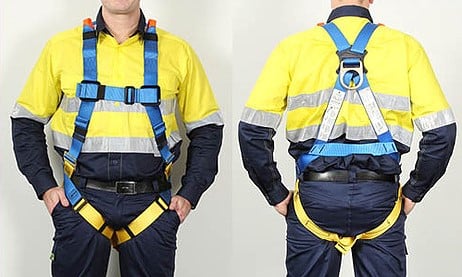
Step 6Stand straight and adjust any straps that feel too loose or too tight. The harness should be secure but not constricting with the straps even and the harness centered. Once secure, tuck away excess straps with keepers, as the excess has the potential to get caught in moving parts or machinery. |
Still not sure which harness best suits your needs? Contact your local ATOM Safety representative.
